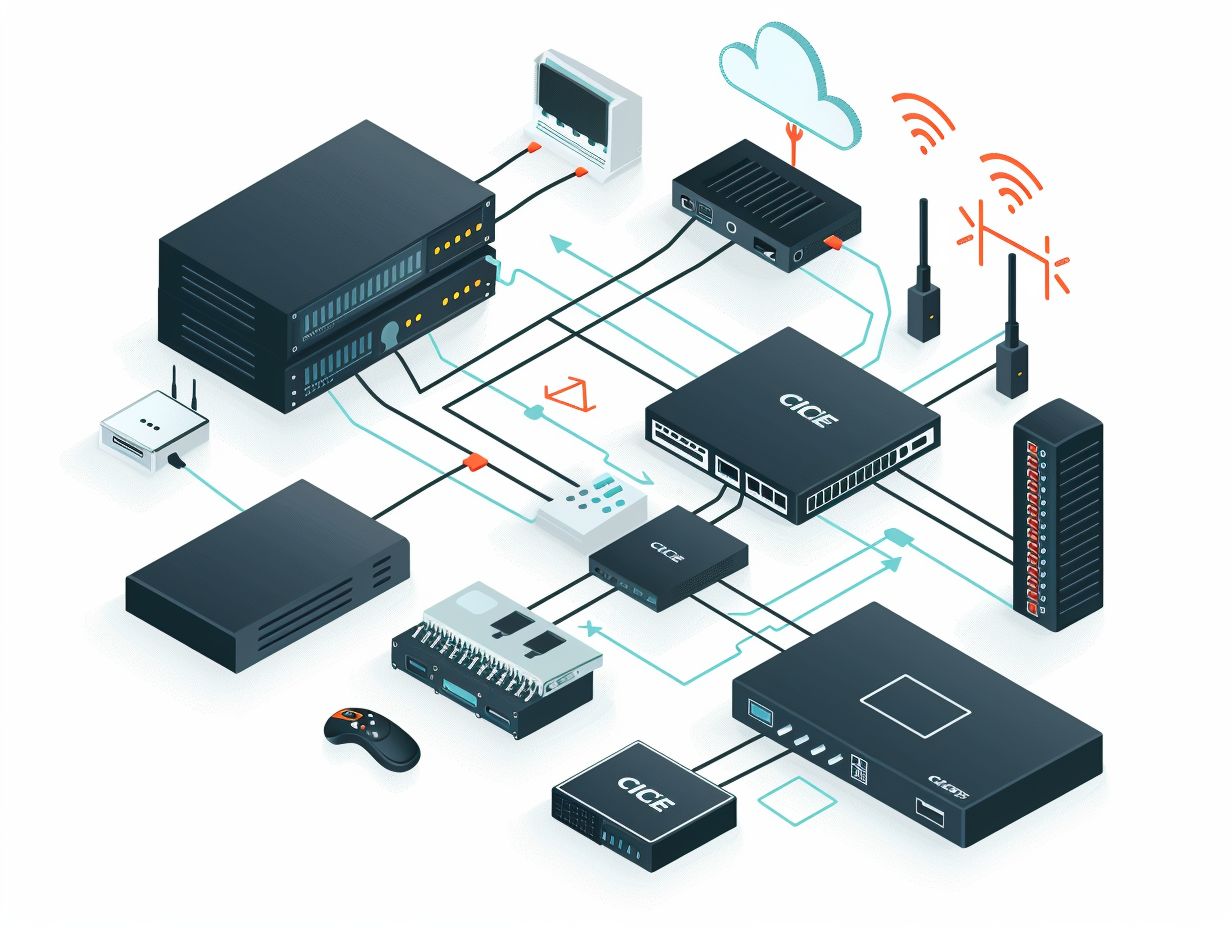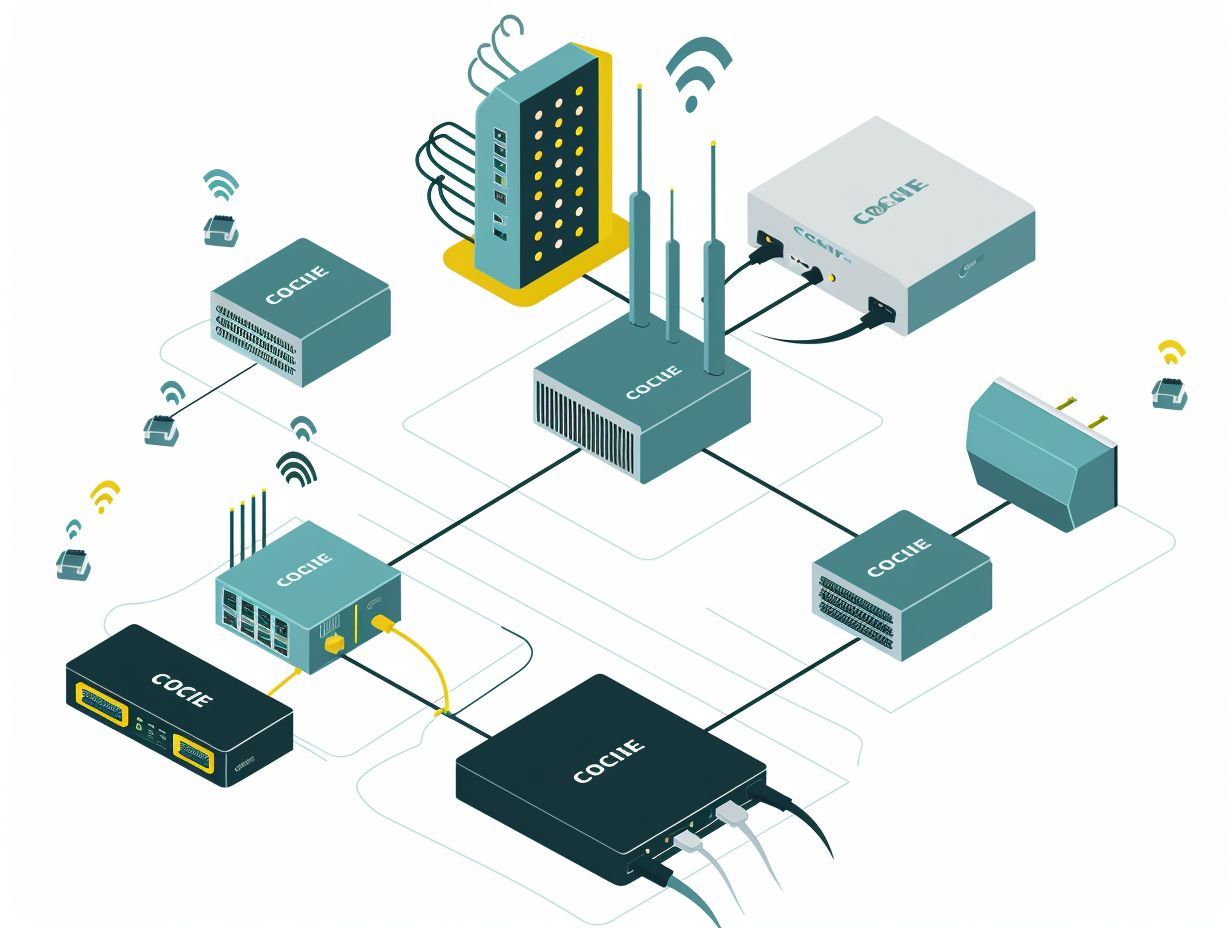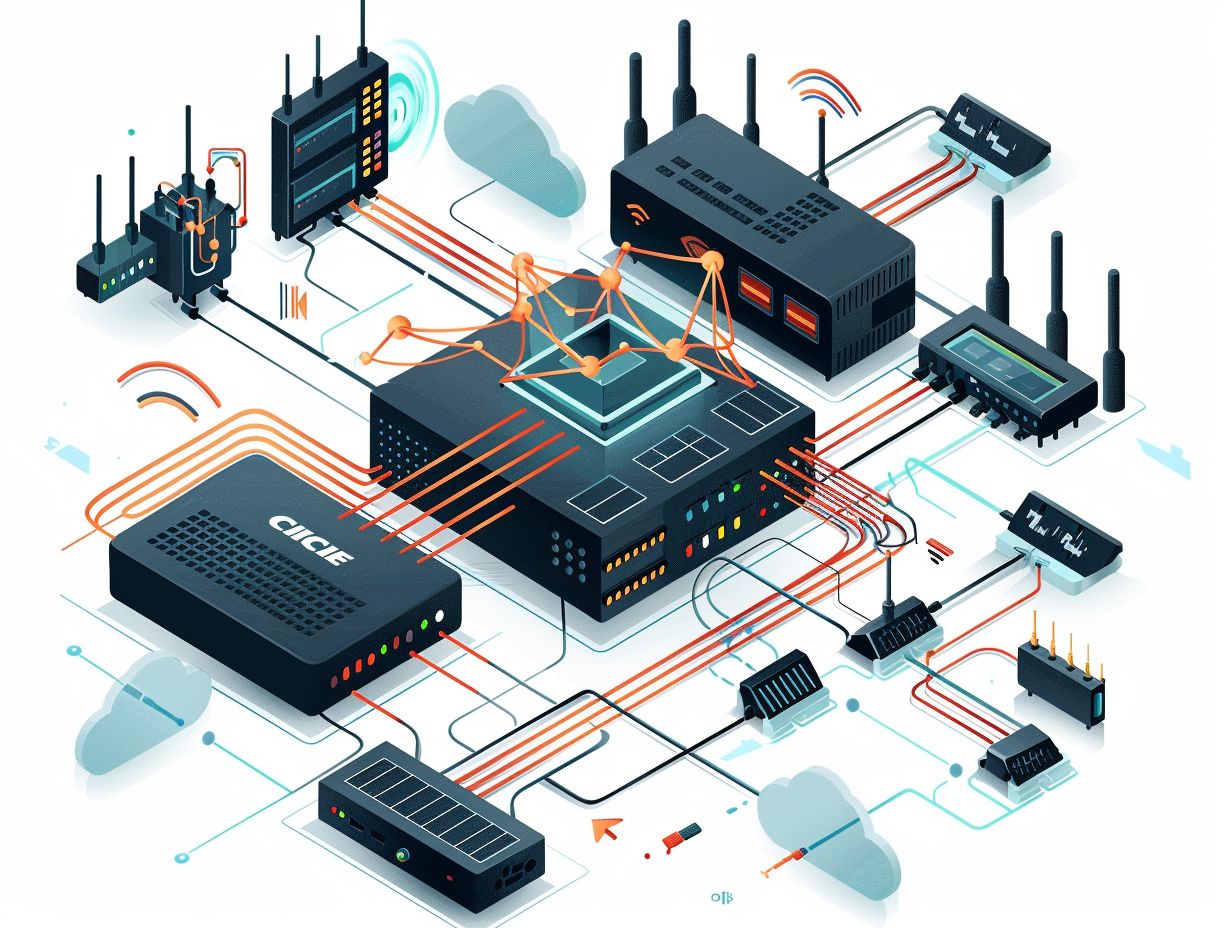In today’s fast-paced and interconnected world, video conferencing has become an essential tool for businesses and individuals alike. When setting up video conferencing solutions, Cisco routers and switches are often the preferred choice due to their reputation for reliability and performance.
To enable video conferencing on Cisco routers and switches, it is crucial to understand the hardware and software requirements. In addition, familiarizing yourself with the necessary configuration steps is essential to ensure a smooth implementation. Throughout this exploration, we will address common troubleshooting issues, security considerations, and best practices to guarantee a secure video conferencing experience.
You are invited to delve into the world of video conferencing on Cisco routers and switches with us as we navigate through the intricacies of this technological landscape.
Key Takeaways:

What is Video Conferencing?
Video Conferencing is a technology that enables users in different locations to engage in face-to-face meetings without the need to convene at a single physical location. This technology facilitates real-time audio and video communication through internet connections.
Originally developed in the late 20th century, video conferencing has undergone significant advancements over the years, driven by improvements in digital technology and internet speeds. Companies such as Cisco Unified Videoconferencing have played a key role in the development and adoption of this technology.
The benefits of video conferencing are manifold, including cost savings on travel expenses, increased productivity through remote collaboration, and a reduced environmental impact. Its versatile applications span across various sectors, encompassing business meetings, remote work interactions, online education, telehealth services, and virtual social gatherings.
In the contemporary digital landscape, video conferencing has become an critical component of communication technologies, seamlessly connecting individuals across the globe.
Advantages of Using Cisco Routers and Switches
Utilizing Cisco Routers and Switches offers numerous advantages, including high performance, reliability, scalability, and advanced security features.
When you integrate these networking products into your infrastructure, you can enhance network efficiency by ensuring fast data transfer speeds and low latency, which are crucial for maintaining smooth operations.
The latest MCU Release from Cisco introduces innovative features that optimize network traffic management, facilitating seamless communication across multiple devices.
Cisco’s network solutions are designed to be compatible with various applications like Acrobat Distiller, providing users with a seamless integration experience.
With robust security protocols and centralized management capabilities, Cisco products offer a comprehensive solution for businesses seeking to improve performance, enhance security measures, and streamline network operations.
Setting up Video Conferencing on Cisco Routers and Switches
When setting up video conferencing on Cisco Routers and Switches, it is crucial for you to follow a comprehensive configuration guide for Cisco Unified Videoconferencing. This will help ensure seamless integration and optimal performance for your video conferencing system.
To begin, log into the Cisco Unified Videoconferencing platform using your credentials. Access the configuration settings and navigate to the network setup section. Here, you will be able to input various parameters such as network IP addresses and ports for the video conferencing devices. Verify that the XML configurations are correctly set up to facilitate smooth communication. The platform provides an XML Creator tool that you can use to generate and deploy XML files tailored to your specific networking devices.
Once the configurations have been finalized, remember to save the settings and proceed to test the video conferencing setup. This step is crucial to ensure that all components are functioning as intended and to address any potential issues before they impact your video conferencing experience.
Hardware and Software Requirements

To set up video conferencing on Cisco Routers and Switches, you will need specific hardware such as cameras, microphones, and compatible software like Acrobat Distiller for PDF conversion. Metadata settings and configuration are essential in optimizing the video conferencing experience.
Along with the necessary hardware and software components, it is critical to effectively manage metadata for organizing and retrieving video conference data efficiently. Implementing Content Type specifications aids in categorizing the shared information during conferences, simplifying the process of locating and referencing it. Managing PDF-related requirements, including language settings and accessibility features, enhances the user experience and ensures seamless document sharing. By focusing on these key elements, you can establish a comprehensive video conferencing setup on Cisco Routers and Switches.
Configuration Steps
The configuration steps for video conferencing on Cisco Routers and Switches involve setting up network parameters, configuring viewer preferences, and adjusting video quality settings to ensure a smooth and high-quality conferencing experience.
To begin the configuration process, open the Action menu on your device and navigate to the network settings section. There, you will need to input the IP address, subnet mask, gateway, and DNS server details according to your network setup.
Once the network parameters are configured, proceed to the viewer preferences tab. In the Page Mode options, you can choose between single-page or dual-page display for a more interactive viewing experience. Adjust the video quality settings to optimize bandwidth usage and ensure clear visuals during the video conference.
Troubleshooting Video Conferencing Issues
When encountering video conferencing issues on Cisco Routers and Switches, it is important to employ effective troubleshooting techniques to address common problems and maintain uninterrupted communication and collaboration.
One issue that users may come across is poor video quality during conferences, which is typically associated with bandwidth limitations or network congestion. To improve video quality in such scenarios, it is advisable to secure a stable internet connection and close any unnecessary applications that may be consuming bandwidth.
Additionally, applying a ‘Flate Decode‘ filter to the video feed can optimize the compression process, potentially resulting in clearer visuals for all participants. It is also recommended to regularly check for software updates and ensure that your device meets the specified system requirements for the video conferencing platform in use.
Common Problems and Solutions
Common video conferencing issues you may encounter include audio/video lag, poor connection quality, or difficulties with guest access. To address these problems, it is recommended that you examine your network settings, verify guest permissions, and optimize your bandwidth allocation.
If you are experiencing audio/video lag, consider closing unnecessary background applications that could be utilizing bandwidth. Additionally, adjusting the video quality settings to a lower resolution may help improve performance. For poor connection quality, switching to a wired internet connection instead of relying on Wi-Fi can enhance stability.
To streamline the process for participants joining the meeting, ensure that guest access permissions are granted through the Proc Set command. Utilizing XObject to manage various elements within the video conferencing software can also facilitate smoother communication.
Security Considerations for Video Conferencing on Cisco Routers and Switches

Ensuring robust security measures for video conferencing on Cisco Routers and Switches is essential for safeguarding against cyber threats, protecting sensitive data, and maintaining the confidentiality of communications.
One of the key aspects of securing video conferencing systems is implementing strong encryption protocols to encode data in transit and maintain its integrity. Access controls play a crucial role in limiting who can join meetings and ensuring only authorized individuals participate. Best practices such as regularly updating software, using virtual backgrounds to protect privacy, and utilizing unique meeting IDs contribute to enhancing security levels.
Ultimately, prioritizing security in video conferencing setups is critical for safeguarding against potential breaches and ensuring safe communication experiences.
Protecting Against Cyber Threats
Protect your video conferencing systems on Cisco Routers and Switches against cyber threats by implementing key security measures. This includes setting up firewalls, intrusion detection systems, ensuring regular security updates, and establishing user authentication protocols.
These cybersecurity practices are essential for protecting sensitive information and maintaining secure communication channels. Plus these foundational security protocols, consider leveraging Cisco security products like Annots and Display Doc Title for an additional layer of protection.
Annots is designed to secure annotations and notes made during video conferences, ensuring that confidential information remains secure. Similarly, the Display Doc Title feature helps safeguard the titles of documents shared during meetings, preventing unauthorized access to critical information. By integrating these advanced security solutions, organizations can strengthen their defenses against potential cyber threats in video conferencing environments.
Best Practices for Secure Video Conferencing
To ensure secure video conferencing on Cisco Routers and Switches, you should follow best practices. This includes implementing regular software updates, establishing encrypted communication channels, providing security protocol training to users, and controlling access based on roles and permissions.
Regularly updating the software on Cisco Routers and Switches is essential for maintaining a secure video conferencing environment. Software updates often include patches and fixes for vulnerabilities that malicious actors could exploit.
Enabling encryption is crucial to maintaining the confidentiality of communication during video conferences and preventing interception by unauthorized parties. User education is key in reinforcing the importance of adhering to security protocols and remaining vigilant against potential threats.
It is important to configure access control settings to limit unauthorized access to sensitive meetings and materials. By following these practices, you can ensure a secure video conferencing environment on Cisco Routers and Switches.
Frequently Asked Questions
What is the purpose of enabling video conferencing on Cisco routers and switches?

Enabling video conferencing on Cisco routers and switches allows for real-time video communication between multiple parties, facilitating collaboration and communication within a network.
How do I enable video conferencing on my Cisco router or switch?
To enable video conferencing on a Cisco router or switch, you will need to configure the device with appropriate Quality of Service (QoS) settings and ensure that it has enough bandwidth to support video traffic.
What is Quality of Service (QoS) and how does it relate to video conferencing on Cisco routers and switches?
Quality of Service (QoS) refers to the methods and mechanisms used to prioritize certain types of network traffic, such as video, over others. Enabling QoS on Cisco routers and switches ensures that video conferencing traffic receives the necessary bandwidth and is not affected by other types of network traffic.
Are there any specific configurations I need to make to my Cisco router or switch for optimal video conferencing performance?
Yes, there are a few key configurations that can help optimize video conferencing performance on Cisco routers and switches. These include configuring QoS settings, enabling multicast support, and ensuring that the device has sufficient bandwidth and processing power.
Can I use any video conferencing software or platform with Cisco routers and switches?
Yes, as long as the software or platform is compatible with the protocols and standards used by Cisco routers and switches for video conferencing, it can be used with these devices. Some popular options include Cisco Webex, Zoom, and Microsoft Teams.
Is there any additional equipment or hardware I need to enable video conferencing on my Cisco router or switch?
Depending on the specific setup and requirements, you may need to purchase additional equipment or hardware such as cameras, microphones, or video conferencing endpoints. It is important to ensure that these devices are also compatible with Cisco routers and switches to ensure smooth communication.
